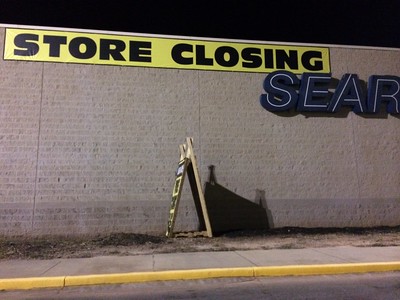If you’ve ever taken a journalism class, you know that Cardinal Sin Number One is burying the lede. So, when I read an article in the Shelby Star about enrollment at Cleveland Community College, I was somewhat surprised to find the following nugget from Andy Gardner, CCC’s Vice President of Student Services in the story’s final paragraph:
“You’ve got the casino going on, and we are going to help them with hospitality and stuff like that, but we are looking at the next five or 10 years and what are the trends. Where is there going to be job growth?” he said. “We don’t want to offer something that doesn’t lead to a high paying job. That just is not a good service to the community, to our students. If they come here, we want to make sure they get credentials that lead to high-paying jobs.”
Yeah, because you wouldn’t want to do that. (Talk about burying the lede.)
You should know a couple of things about Cleveland Community College. First, it’s not big; it had a total enrollment of 3.683 students in 2020. Second, CCC was invited to compete in the first inaugural Aspen Prize in 2011, placing it in the top 10% of community colleges nationwide. Third, they have 67 full-time faculty members on staff, which means they have one full-time instructor for every 55 students. By comparison, Washtenaw Community College has one full-time instructor for every 133 students. Fourth, CCC has a negative cost of attendance. In other words, the average student attends CCC at no net cost to them. Finally, CCC’s attendance increased by 17% in 2021. Summer 2022 enrollment increased by 20% over Summer 2021.
Whatever Cleveland Community College is doing, it’s working.
Focus on the students and enrollment increases will follow
What it’s doing is paying attention to the local economy, anticipating employment opportunities, and capitalizing on them. Now, keep in mind that I did not say CCC was focused on meeting the needs of specific employers. CCC ends up doing that, but it does what’s best for its students by identifying developing employment trends.
Through trendspotting, CCC knows which high-wage careers to train its students for. The wage potential of a career is a specific decision-point for the college. If a program doesn’t result in a high wage job for a student, that program is not worth running.
More than twenty percent of Shelby’s 22,000 residents live in poverty. Its median household income is less than $40,000. Like many other communities, Shelby has lost major retail employers like Lowe’s, Sears and K-Mart, and it can’t really settle for even lower-wage replacement jobs. That’s why CCC focuses on its students.
For whatever reason (likely because it’s easy), WCC has chosen to focus on the needs of the employer, and fails to focus on the needs of its students. As a result, WCC ends up training people for $12/hour jobs. Not surprisingly, enrollment is dropping because it’s hard to live in Washtenaw County on $12/hour. (That might easily escape a WCC executive who makes $140/hour.)
That’s also not what the voters of Washtenaw County had in mind when they created WCC. We don’t need a low-wage job incubator, which is what the WCC Administration has created for us. We need a community college that’s committed to creating opportunities for students to train for high-wage jobs.
It’s why CCC’s enrollment rose during the pandemic, and why it continues to rise.
Photo Credit: Mike Kalasnik , via Flickr










